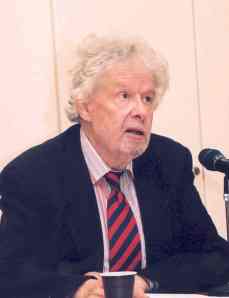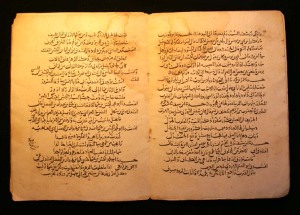To my disquiet, I find that I am already going to this term’s seminars without having written up all of last term’s yet. In my defence: editors! Kalamazoo! And, to distract you further, this term’s IHR Earlier Middle Ages Seminar schedule is here. However, if you’re still demanding to know where the missing content is, I suppose I’d better tell you about Roy Flechner‘s presentation to that same seminar last term, on 10th March, when he spoke to the title, “What can canon law tell us about the Gregorian mission to Kent?”

Ivory carving of Pope Gregory the Great being inspired by the Holy Spirit, now in the Kunsthistorisches Museum, Vienna
[Edit: a source I obviously misunderstood Roy’s presentation of is pinned down in comments by the elusive Two-Fingered Typist, which has meant fairly coarse editing of some of what follows; I apologise to the other commentators who responded to the initial version. I’ve enclosed what I’ve changed in square brackets.]
Roy’s basic pitch was that, since we know that Gregory the Great was a dab hand with the Church canons, he must have taken time to think, when he plotted the mission to the English (in response, [Gregory tells us, to a local request after a failure to get religion from unspecified ‘neighbours’]) what the legal implications of it would be. Not least, he had a plan to set up twelve new bishoprics, but Britain had had bishops before, indeed apparently still did as St Augustine met with them to famous failure, and so there were sees notionally there that would have to be over-ruled and replaced. Roy pointed out that good precedents existed for this after the end of the Donatist Schism in Africa, where numerous parallel bishoprics and their properties had to be merged. This was regulated by the Council of Carthage in 418, which would certainly have been known to Gregory. Roy also argued that Gregory’s involvement of as many Frankish bishops as possible through letters showed an attempt to proceed in a quasi-conciliar fashion, to provide a better legal backing for the massive abrogation of existing rights (and rites) he was about to order. This he did rather than do what he might have done and declare the British Church heretical for Quartodecimianism; after all, as Roy pointed out, some of the Frankish bishops of the day thought the Irish missionary saint Columbanus was a heretic for this and other reasons, and the two churches seem to have been of one calendar on this.

Portrait of St Augustine from the St Petersburg manuscript of Bede's Ecclesiastical History (from Wikimedia Commons)
For me this was one of those seminars where I am asked to think about a topic I’ve not really considered deeply before, and then having done so I come away with a very different view from that of the person presenting. I thought there was a substantial elephant in the room here, and it was the Franks. Not only, as Roy admitted, has Ian Wood among others argued that the Franks exercised some kind of hegemony over Southern England at this time, the turn of the fifth to sixth centuries, so that not just the conciliar approach in which many Frankish bishops were involved but also the request from the vicini to assist their ongoing mission in England could be viewed in that context; but most of all, there is the rider of the aforesaid elephant, Bishop Liudhard who is supposed to have come to England with King Æthelberht of Kent’s Frankish wife. Roy didn’t mention him but for me he is a much more plausible explanation of the peculiarities Roy was mentioning. We know [that ‘neighbours’ of the English had been approached to provide Christianity, or at least we know that Gregory claimed this:] Roy favoured the British, but Bede outright denies this, though it has been suggested that he had to for his scheme of Anglian unity through conversion to work. Furthermore, the closest functioning British sees we know of at this time were Bangor and Carlisle—there are arguments to be made for Chester too—none of which are exactly ‘neighbours’ to Kent. Meanwhile, there’s an actual Frankish bishop restoring churches [at Canterbury]! Occam’s Razor… Also, this [could help] explain why Gregory planned the southern metropolitan to be London, not Canterbury; there was already a bishop in Canterbury! [Though, as I was forced to admit in comments, the actual chronology of the sources does seem to stop this idea working.] But Æthelberht seems to have had his own reasons for getting rid of Liudhard; we never hear of him again, Augustine moved in on his see [if see it e’er was] and London is never metropolitan, at least not in ecclesiastical terms. Then Gregory had to rearrange the situation, which may explain why, as Roy also admitted, he didn’t actually follow the template of Carthage in dealing with the British Church; things were already out of his hands, and the British may not have been the problem he had most immediately in mind.

St Martin's Canterbury, the church restored for use by Bishop Liudhard, from Stephen Bax's booklet on the church
So although I’m glad Roy asked all these questions, I don’t think I agree with him about many of the answers. That said, he’s perfectly right to make us think about Gregory would have thought about this whole venture, and what groundwork he had to arrange to make it happen, and he’s certainly right to stress that this kind of source material has something to contribute to this question. I guess I just have to be different…
The obvious source material for Gregory’s intents on the mission has always been the letters between him and Augustine that Bede incorporated into his Ecclesiastical History, which is in the Internet Medieval Sourcebook as well as in your edition of choice, but Roy added Gregory’s letters into the mix and much of what he had to tell us that wasn’t widely known came from a close reading of them; they are edited in Dag L. Norberg (ed.), S. Gregorii Magni Registrum epistularum (Turnhout 1982). Ian Wood’s arguments are most fully set out in an annoyingly unobtainable pamphlet, his The Merovingian North Sea, Occasional Papers on Medieval Topics 1 (Alingsås 1983), but there is also some coverage in his The Merovingian Kingdoms 450-751 (London 1994).










![IMGP1193 [800x600] Dave Brock of Hawkwind playing at the Cambridge Junction, December 2009](https://tenthmedieval.files.wordpress.com/2010/04/imgp1193-800x600.jpg?w=88&h=96)






